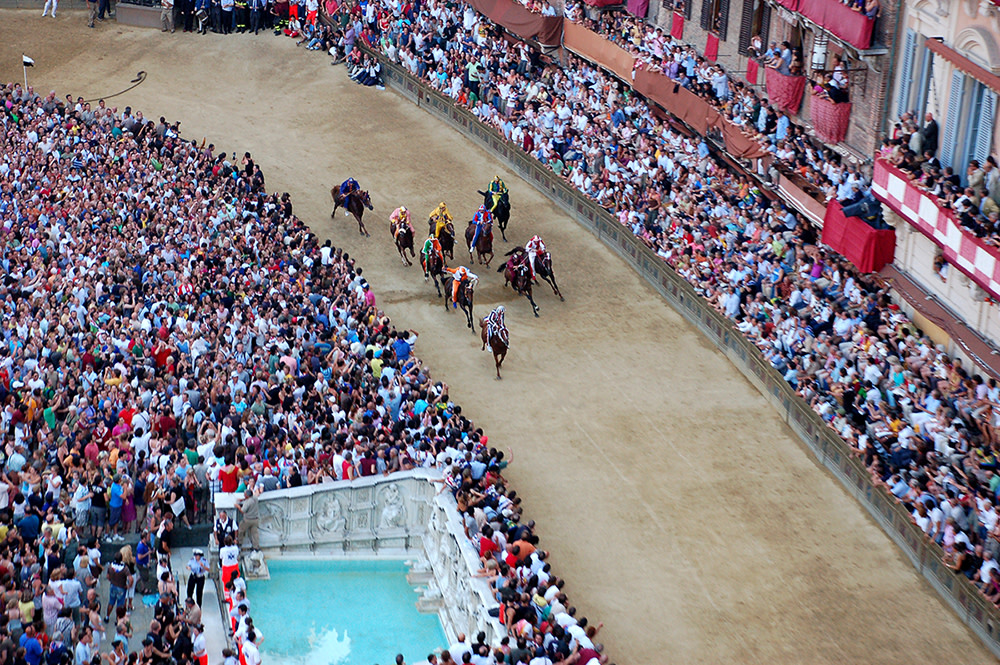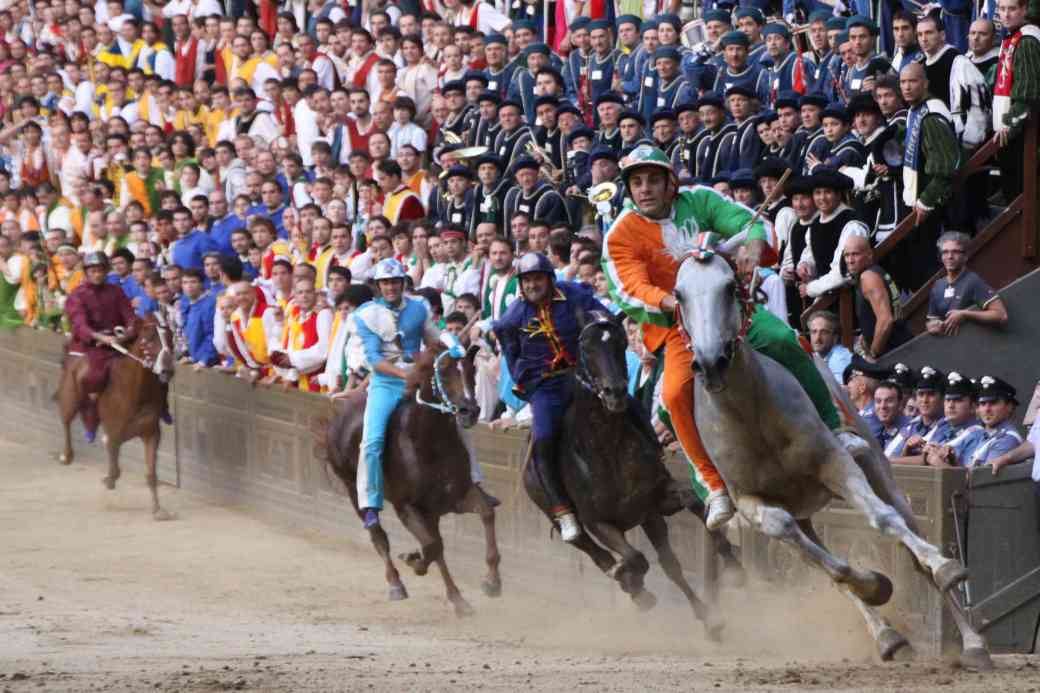Palio di Siena: history and curiosities about the event that enlivens Piazza del Campo
Everything you need to know about the well-known Sienese tradition held on 2 July and 16 August
Don't expect a horse race, albeit an anomalous one. The three laps on the tuff of the Piazza del Campo, a breathtaking gallop, a kilometre in a minute, are just the climax of a celebration involving an entire city.
 Il Palio di Siena luglio 2008 4
Il Palio di Siena luglio 2008 4HISTORY AND CURIOSITIES
Since time immemorial, ever since the Siena of communal pride was the coagulum for the contrade (districts), which have had iron boundaries since 1555. And seventeen flags with a capillary organisation, each a micro-republic, that has overcome the pitfalls of the centuries. Not without worries and disputes: there have been many troubles, especially since the challenge has sometimes been instrumentalised.
Of the Palio one has in one's eyes the frenzy of the race, the spectacular and bloody falls of the horses, but the double celebration - 2 July and 16 August - lives on all year round. The contrade in the winter follow the jockeys and evaluate those horses that can be in the lot for the Piazza del Campo. Compact, robust and agile half-breeds are chosen, suitable for overcoming the San Martino bend and the Casato bend unscathed, true Everest of balance. It is folklore that they are doped: thoroughbreds were abandoned because they were naturally too fast to handle the curves.
Forty days before the palio the ceremony that kicks off the career: the drawing of lots for the contrade that are added to those running by right, usually three (those by right are the seven excluded the year before). Then the city begins to transform: the boxes are erected in the Piazza del Campo, the tufa is laid on the pietra serena, the vets give the final touches to the horses. Today, in addition to the eve visits, there are also the expected ones. The alleys of the contrade bloom with tables and chairs, with festoons of illumination and many flags. Under which people gather until late into the night to reminisce and make resolutions. Chants are wasted. The night before the festival rosary begins, the square comes alive: many horses are taken to test the tuff but also to a propaganda parade among the contradaioli.
 Palio di Siena
Palio di Siena Four days before the race, it is time for the tratta: the ten 'barberi' drawn by lot. It is an intense morning: the horses are divided into batteries and run the three laps under the eyes of the captains and their experts. The captains choose the ten horses, sometimes not to really select the best but hoping that the 'brenna' goes to the opponent. Thus, around one o'clock in the afternoon, the square buzzes with hopes and fears. It is one of the most intense moments of the palio. The ten horses are drawn by lot by the mayor and taken to the contrada stables amidst songs of joy or hope. They can no longer be changed: if they are injured, they can be exempted from one or more trials; if the illness is more serious, the contrada does not run. Off-limit territory, watched on sight, the stable: the barbarian (the person in charge of the stable, who will never abandon the horse) and the jockey become familiar with the fruit of fate.
As evening falls, here is the first of the six tests: the order at the canapi is always drawn by lot, the rules are punctilious but in essence simple. The jockey calls the jockeys to arrange themselves between the ropes and, when he succeeds in the possible alignment, he lowers the canape. If the move is not valid, he strikes the mortar and starts again. The operations are often complex and exhausting as each jockey seeks the best position or the favour of an accomplice. Sometimes the mossiere calls the jockeys back, can admonish them, with repercussions from the paliesca justice. The rehearsals continue, one in the morning and one in the evening. In the meantime, it is discovered how the 'cencio', the silk banner, the only prize of the palio, was painted.
CONTRADES
Two Palios are run each year: the first on 2 July, in honour of Our Lady of Provenzano, the second on 16 August in honour of Our Lady of the Assumption, and there are ten - out of a total of seventeen - Contrade (districts) that run each Palio.
The seven Contrade that did not run the previous year's Carriera on the same date, July on July and August on August, run by 'right', while the other three are drawn among the ten that did.
 An equestrian competition between the Contrade di Siena, which has been held since the Middle Ages
An equestrian competition between the Contrade di Siena, which has been held since the Middle Ages







